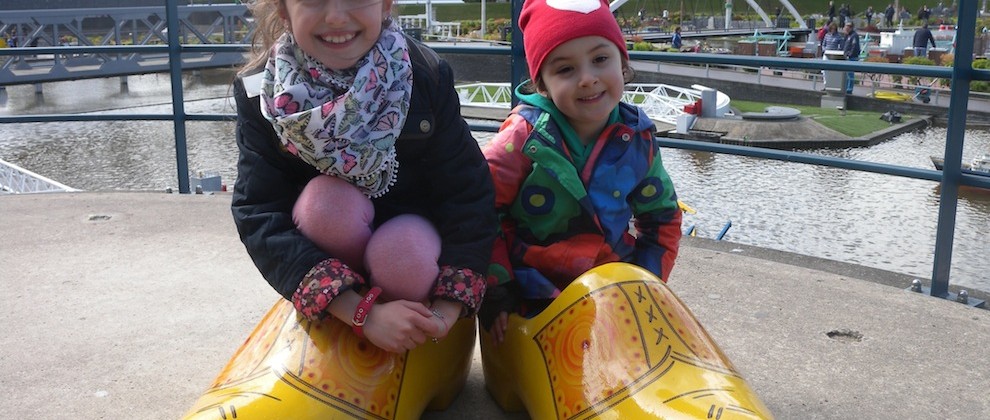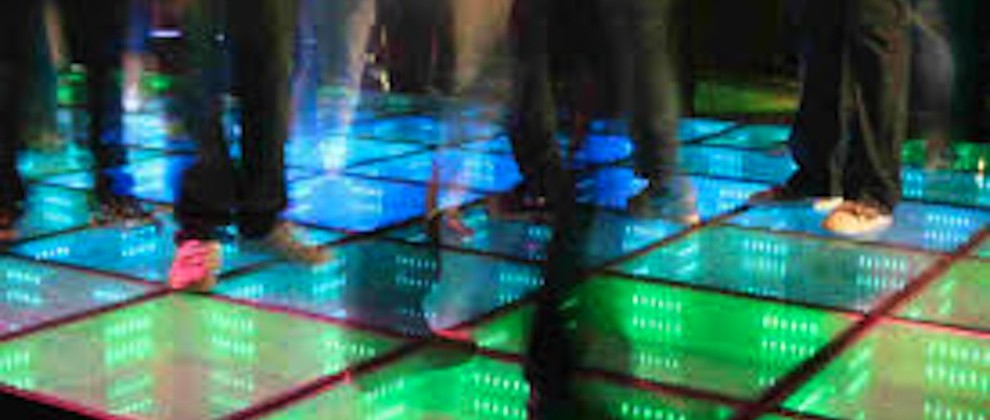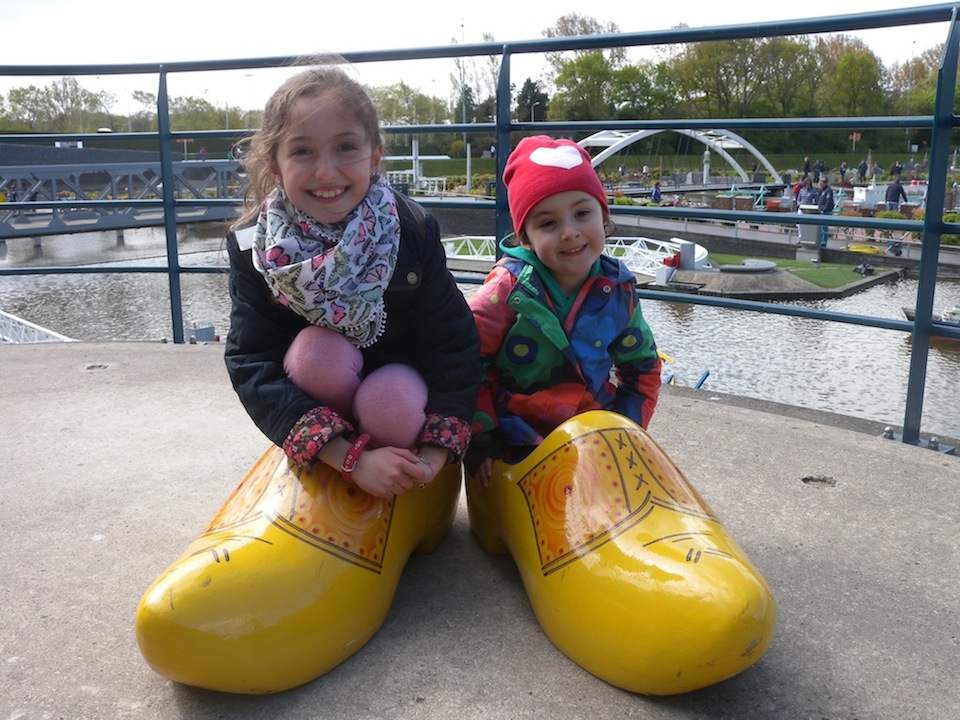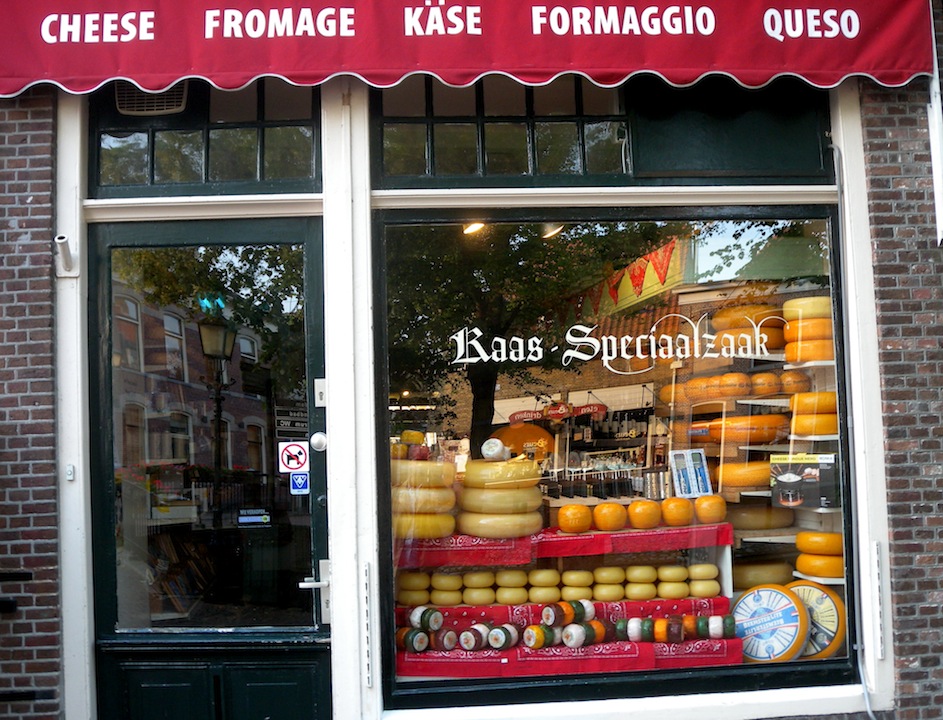* My story won in the Dutch City category at the Holland Travel Writers Awards, staged on Tuesday night in London. This is an unedited version of the story that appeared in Family Traveller magazine.
It was a two-wheeled baptism of fire.
I turned out of the alleyway, freewheeling shakily on a lightweight Dutch city bike and immediately had to turn left into the path of the oncoming traffic.
As I wobbled, swerved and nearly wiped out a couple of pedestrians, I was beginning to think a family cycling trip to Holland hadn’t been such a great idea after all – especially as I hadn’t been on a bicycle in over 30 years.
But if anywhere could get me back in the saddle, then Holland could. This is, after all, a county with 17m inhabitants but over 18m bikes and 32,000km of cycle paths.
The Dutch government is also championing initiatives to promote cycle safety and traffic awareness this year. That’s why I have brought my two learner-cyclist daughters, Maya, eight, and Olivia, four, to Holland for a school-holidays escape.
Moreover, with the two of them increasingly leaving me behind on their racer and balance bikes respectively, I was hoping something of the local cycling culture would rub off on me, too.
It’s like Arthur Wieffering, the cycling-evangelist founder of The Hague’s Totzo! Cycle Tours and Lola Bikes and Coffee café, told me over double shots of Ethiopian fair-trade beans.
“Cycling is a piece of freedom. If you cycle every day, then you free your mind.”
Seaside cycling
We started our journey in The Hague, a short train journey from Amsterdam’s Schiphol airport.
Based in Schevenigen, the seaside resort on the city’s North Sea coast, I spent the first morning introducing the girls to some Dutch culture.
Madurodam [pictured above], the miniature-village version of Holland, offered a breezy résumé of centuries of Dutch history and stereotypes – from clogs via windmills to tulips.
It was a fun few hours and while I enjoyed marveling at a scale version of Alkmaar’s historic cheese market, the girls loved the interactive exhibits and adventure playground.
But it was soon time to get cycle serious.
We joined a three-hour city-and-sea bike tour with Totzo!, exploring hidden-gem attractions around the city, such as the Palace Gardens behind the working Ordained Palace, before biking across the city to the Zuiderstrand (South Beach) district for lunch.
The girls set out in matching princess-pink cycle helmets, Maya on her own bike and Olivia in a strap-on seat behind our guide, while I struggled behind.
Maya was nervous at first cycling in traffic but she soon found her confidence, indicating and turning like a local. Olivia happily soaked up the views.
Along the way, Totzo! Tour guide Tymen Willemsen, explained why Holland was named the most bike-friendly country in Europe (joint with Denmark) according to the European Cyclists’ Federation Cycling Barometer.
“Holland’s natural geography is flat, distances between the major cities are short and there’s a well developed infrastructure for cyclists,” he said, pointing out the landmarks.
“I got my first bike aged three and started riding to primary school every day. Even today I own four bikes and only a part share of a car,” added Tymen.
“While cycling has an obvious environmental and health benefits, it’s a simple economic decision for me.”
Having negotiated the traffic, we settled into a gentle cruise along Strandweg, the long promenade beside the windswept seafront, stopping to browse gift shops and tuck heartily into a lunch of fresh fish, spare ribs and garlic-mayonnaise-dipped chips at Zanzibar Beachclub, one of a string of buzzy beachfront restaurants overlooking the North Sea.
“Yummy,” beamed Olivia, licking her fingers.
Canal city
The next day we moved on by train to Utrecht, a small, historic city built around the 14th-century Cathedral Tower and the bustling canal-side Oudegracht district of galleries, cafes and boutiques.
Our new base was at a house belonging to the Vrienden op de Fiets group, an association of some 3,000-odd affiliated guesthouses run by private homeowners, offering bed, shared facilities and a basic breakfast for around €30 per night.
Many are of them are run by cyclists knowledgeable about local cycle routes and each address has its own particular style.
In a southeastern suburb of Utrecht, just outside the historic city centre, Marjolein Jacobs’ home of four simple but homely rooms is like something out of Pippi Longstocking.
A giant papier-mâché butterfly hangs on the wall and the story of the Princess and the Pea is scrawled across the landing. Over glasses of apple juice in the living room, a swing hanging from the ceiling, eccentric-aunt Margolis made us feel at home.
“I like to talk to people, I love to hear the stories the guests bring with them. This is a guesthouse, not a B&B,” she said, hands tucked into her purple apron and woolly-sock toes peeping through her sandals.
“I’m not here to make money. We want to feel we can share things together,” she added, an old record player belting out a scratchy seven inch of Tight Fit’s The Lion Sleeps Tonight behind her.
We set out the next morning to pick up our bike for the day, a traditional Dutch ‘bakfiets’, or ‘cargo bike’.
Our sturdy three-wheeler came with a large cargo box at the front for Maya and Olivia to sit inside. It was plain boxy brown but some come customised with decorations of flowers or mascots and a canopy.
The girls seemed a bit unsure at first about our new mode of transport, Maya somewhat embarrassed by looks from passers-by as dad swerved clumsily around the narrow, canal-side streets and struggled with a hill start at traffic lights.
“Everyone’s looking,” she moaned, cringing under her helmet. “Soo embarrassing.”
After a while, however, I got a feel for the bike and really appreciated the greater stability of the sturdy front section while Olivia happily curled up on the cushions for an in-transit power nap as we followed the canal towards the fringe of the city centre.
I had stocked up in advance on picnic food at a local branch of the Albert Heijn supermarket train and steered us steadily out along the River Vecht towards the fairytale castle of Slot Zuylen, located in the village of Oud-Zuilen.
Brightly painted houseboats bobbed in the gentle waters beside the well-marked cycle lane and birds were singing overhead in a cotton-wool sky.
I could feel a new sense of cycling-Zen calm starting to drift over me and, after a morning of vigorous peddling, munched hungrily on the spread of bread, cheese, cold ham and fruit, all washed down with pink lemonade.
Family friendly
Over the week we had started to master the art of Dutch-style cycling but, as a single parent with two young children in tow, how family friendly did Holland prove to be overall?
Generally pretty good. Everyone speaks English, costs are reasonable compared to home and everything works.
As a local on the number one tram in The Hague said to me: “If you have a problem here, it’s a first-world problem.”
I was impressed some places we visited incorporated thoughtful touches for kids, such as little booths in the restaurant at Madurodam in The Hague to watch cartoons while the adults finish their food.
The Keuken Restaurant & Deli in Utrecht encourages kids to eat up their food with the promise of a visit to the kitchen to make their own ice-cream for desert.
Given the girls’ ages, we were hardly out late. But, generally, if we headed for dinner about six, then we could plan the next day, the kids could do some coloring between courses and dad could unwind over a couple of local wheat beers.
Then we headed back to the accommodation for a couple of chapters of Charlotte’s Web and lights out.
Even relying on public transport posed no problem. We only splashed out on a couple of taxis in a week and connections were universally easy to negotiate.
I did find myself a couple of times struggling into a crowded train carriage with a child on each hand a heavy bag strapped across my back.
But, while the majority of people simply stared intently at their phones, one generous soul did give up their seat for the girls to sit down on both occasions.
Heading home
On the last day we took the bakfiets for one last spin, cruising the canal-side cycle lanes to the Dick Bruna House, the museum dedicated to the creator of the children’s character Miffy, or Nijntje, (‘little rabbit’) as she is known in Holland.
The Utrecht-born illustrator published his first Miffy story in 1955 and Miffy celebrates her 60th birthday next year – Utrecht also hosts the Grand Depart of the 2015 Tour de France.
Olivia loved listening to Miffy stories on headphones while Maya got busy at the craft table, colouring in a series of Miffy cartoon strips to hang in the gallery.
Upstairs we all posed for pictures – alongside Miffy, ‘natch – on the medal podium.
Maya took the gold for her superior cycling, Olivia the silver for her expert balance biking and dad picked up the bronze for some shaky cycling but, at least, not being drunk in charge of a bakfiets.
Sir Chris Hoy may not have anything to worry about just yet but, after a week of cycling Dutch style, we’re more than just back in the saddle. The Atkinson girls are now cycle savvy.
What did you think of this story? Post your comments below.
Liked this? Try also A walk in Mondrian’s artistic footsteps.



